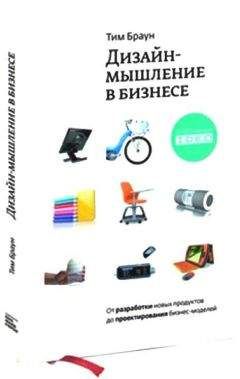Эми Кадди - Присутствие [духа]. Как направить силы своей личности на достижение успеха
198
Tiedens L. Z. & Fragale A. R. (2003). Power moves: Complementarity in dominant and submissive nonverbal behavior. Journal of Personality and Social Psychology, 84, 558–568.
199
Barrick M. R., Shaffer J. A. & DeGrassi S. W. (2009). What you see may not be what you get: Relationships among self-presentation tactics and ratings of interview and job performance. Journal of Applied Psychology, 94, 1394–1411. Исследования различных тактик манипуляции впечатлением обнаружили действенность некоторых вербальных тактик (например, использование положительных терминов при описании себя и рассказывание историй своего успеха), но не невербальных тактик (таких, как частый контакт глаз и улыбки; см. Gilmore D. C. & Ferris G. R. [1989]. The effects of applicant impression management tactics on interviewer judgments. Journal of Management, 15, 557–564; Stevens C. K. & Kristof A. L. [1995]. Making the right impression: A field study of applicant impression management during job interviews. Journal of Applied Psychology, 80, 587–606). Однако и эти эффекты сглаживаются или пропадают с увеличением длительности собеседования (см. Tsai W. C., Chen C. C. & Chiu S. F. [2005]. Exploring boundaries of the effects of applicant impression management tactics in job interviews. Journal of Management, 31, 108–125) или на более структурированных или стандартизованных собеседованиях (см. Barrick M. R., Shaffer J. A. & DeGrassi S. W. [2009]. What you see may not be what you get: Relationships among self-presentation tactics and ratings of interview and job performance. Journal of Applied Psychology, 94, 1394–1411) и собеседованиях с участием более подготовленных интервьюеров (см. Howard J. L. & Ferris G. R. [1996]. The employment interview context: Social and situational influences on interviewer decisions. Journal of Applied Social Psychology, 26, 112–136). На степень влияния тактик манипуляции впечатлением на окончательное решение о найме влияет множество факторов: пол как соискателя, так и интервьюера (см. Baron R. A. [1986]. Self-presentation in job interviews: When there can be «too much of a good thing». Journal of Applied Social Psychology, 16, 16–28; Rudman L. A. [1998]. Self-promotion as a risk factor for women: The costs and benefits of counterstereotypical impression management. Journal of Personality and Social Psychology, 74, 629–645; Von Baeyer C. L., Sherk D. L. & Zanna M. P. [1981]. Impression management in the job interview when the female applicant meets the male (chauvinist) interviewer. Personality and Social Psychology Bulletin, 7, 45–51), валентность аффективного состояния интервьюера (см. Baron R. A. [1987]. Interviewer’s moods and reactions to job applicants: The influence of affective states on applied social judgments. Journal of Applied Social Psychology, 17, 911– 926) и воспринимаемое сходство интервьюера с соискателем (see Judge T. A., Cable D. M. & Higgins C. A. [2001]. The employment interview: A review of recent research and recommendations for future research. Human Resource Management Review, 10, 383–406). Возможно, самый важный момент – видя, как соискатель работы пытается манипулировать производимым впечатлением, интервьюер начинает воспринимать его как неискреннего человека и манипулятора, что ведет к неблагоприятному для соискателя решению (см. Baron R. A., Self-presentation in job interviews).
200
Semnani-Azad Z. & Adair W. L. (2011). The display of “dominant” nonverbal cues in negotiation: The role of culture and gender. International Negotiation, 16, 451–479.
201
American International Group, Haka: History.
202
Fairbanks E. (2015, February 25). How surfing taught me to make choices. The Washington Post. Взято по адресу: http://www.washingtonpost.com/posteverything/ wp/2015/02/25/how-surfing-taught-me-to-make-choices/.
203
Цит. по Brower V. (2006). Mind-body research moves towards the mainstream. EMBO Reports, 7, 358–361.
204
James W. (1884). What is an emotion? Mind, 9, 188–205, 194.
205
Однако следует заметить, что примерно в то же время датский врач Карл Георг Ланге независимо от Джеймса разрабатывал сходную теорию о том, что эмоции являются следствием физических ощущений. В результате идея о том, что невербальные выражения являются причиной, а не следствием эмоций, часто называется теорией Джеймса – Ланге.
206
James, What is an emotion?, 190.
207
Critchley H.D., Mathias C.J. & Dolan R.J. (2001). Neuroanatomical basis for firstand second-order representations of bodily states. Nature Neuroscience, 4, 207–212; Critchley H.D., Mathias C.J. & Dolan R.J. (2002). Fear conditioning in humans: The influence of awareness and autonomic arousal on functional neuroanatomy, Neuron, 33, 653–663.
208
Laird J. D. (1974). Self-attribution of emotion: The effects of expressive behavior on the quality of emotional experience. Journal of Personality and Social Psychology, 29, 475–486.
209
Strack F., Martin L. L. & Stepper S. (1988). Inhibiting and facilitating conditions of the human smile: A nonobtrusive test of the facial feedback hypothesis. Journal of Personality and Social Psychology, 54, 768–777. Этот эксперимент очень похож на описанный в работе Лэрда (1974) эксперимент с оценкой карикатур.
210
Dzokoto V., Wallace D. S., Peters L. & Bentsi-Enchill E. (2014). Attention to emotion and non-western faces: Revisiting the facial feedback hypothesis. The Journal of General Psychology, 141, 151–168; Mori K. & Mori H. (2009). Another test of the passive facial feedback hypothesis: When your face smiles, you feel happy. Perceptual and Motor Skills, 109, 76–78.
211
Ito T. A., Chiao K. W., Devine P. G., Lorig T. S. & Cacioppo J. T. (2006). The influence of facial feedback on race bias. Psychological Science, 17, 256–261.
212
Mori H. & Mori K. (2007). A test of the passive facial feedback hypothesis: We feel sorry because we cry. Perceptual and Motor Skills, 105, 1242–1244.
213
Mori K. & Mori H. (2010). Examination of the passive facial feedback hypothesis using an implicit measure: With a furrowed brow, neutral objects with pleasant primes look less appealing. Perceptual and Motor Skills, 111, 785–789; Larsen R. J., Kasimatis M. & Frey K. (1992). Facilitating the furrowed brow: An unobtrusive test of the facial feedback hypothesis applied to unpleasant affect. Cognition & Emotion, 6, 321–338; Duclos S. E. & Laird J. D. (2001). The deliberate control of emotional experience through control of expressions. Cognition & Emotion, 15, 27–56.
214
Lewis M. B. & Bowler P. J. (2009). Botulinum toxin cosmetic therapy correlates with a more positive mood. Journal of Cosmetic Dermatology, 8, 24–26.
215
Wollmer M. A., de Boer C., Kalak N., Beck J., Götz T., Schmidt T. & Kruger T. H. (2012). Facing depression with botulinum toxin: A randomized controlled trial. Journal of Psychiatric Research, 46, 574–581.
216
Neal D. T. & Chartrand T. L. (2011). Embodied emotion perception amplifying and dampening facial feedback modulates emotion perception accuracy. Social Psychological and Personality Science, 2, 673–678.
217
Dimberg U., Thunberg M. & Elmehed K. (2000). Unconscious facial reactions to emotional facial expressions. Psychological Science, 11, 86–89.
218
North-Hager E. (2011, April 22). Botox impairs ability to understand emotions of others. Взято по адресу: https://pressroom.usc.edu/botox-impairs-ability-tounderstand-emotions-of-others/.
219
Ibid.
220
Laird J. D. & Lacasse K. (2014). Bodily influences on emotional feelings: Accumulating evidence and extensions of William James’s theory of emotion. Emotion Review, 6, 27–34, 31–32. Более полный обзор исследований мимической обратной связи можно найти в работе Laird, J. D. (2006). Feelings: The perception of self. Oxford: Oxford University Press.
221
Кое-кто предлагает убрать букву «Р» из аббревиатуры ПТСР, чтобы устранить социальную стигму, связанную со словом «расстройство». См. Thompson M. (2011, June 5). The disappearing «disorder»: Why PTS is becoming PTS. Взято по адресу: http:// nation.time.com/2011/06/05/the-disappearing-disorder-why-PTS-is-becoming-pts/.
222
Van der Kolk B. A. (2014). The body keeps the score. New York: Viking, 213.
223
Interlandi J. (2014, May 22). A revolutionary approach to treating PTS. The New York Times Magazine. Взято по адресу: http://www.nytimes.com/2014/05/25/ magazine/a-revolutionary-approach-to-treating-PTS.html.
224
Seppälä E. M., Nitschke J. B., Tudorascu D. L., Hayes A., Goldstein M. R., Nguyen D. T. H., Perlman D. & Davidson R. J. (2014). Breathing-based meditation decreases posttraumatic stress disorder symptoms in U.S. military veterans: A randomized controlled longitudinal study. Journal of Traumatic Stress, 27, 397–405.
225
Цитируется там же.
226
McGonigal K. (2009). Yoga for pain relief: Simple practices to calm your mind and heal your chronic pain. Oakland, CA: New Harbinger Publications.
227
Van der Kolk, The body keeps the score, 214.
228
Ibid., 208. В своей книге я рассказываю только о дыхании и движении, но ритм и хоровое пение тоже могут быть полезны для достижения присутствия. Дальнейшую информацию см. в книге ван дер Колка.
229
Van der Kolk B. A., Stone L., West J., Rhodes A., Emerson D., Suvak M., & Spinazzola J. (2014). Yoga as an adjunctive treatment for posttraumatic stress disorder: A randomized controlled trial. The Journal of Clinical Psychiatry, 75, 559–565.
230
Melville G. W., Chang D., Colagiuri B., Marshall P. W. & Cheema B. S. (2012). Fifteen minutes of chair-based yoga postures or guided meditation performed in the office can elicit a relaxation response. Evidence-Based Complementary and Alternative Medicine, 2012.
231
Недавний обзор см. в Muhtadie L., Koslov K., Akinola M. & Mendes W. B. (2015). Vagal flexibility: A physiological predictor of social sensitivity. Journal of Personality and Social Psychology, 109, 106–120.
232
Van der Kolk, The body keeps the score, 201.
233
Seppälä et al., Breathing-based meditation; Bhasin M. K., Dusek J. A., Chang B. H., Joseph M. G., Denninger J. W., Fricchione G. L., Benson H. & Libermann T. A. (2013). Relaxation response induces temporal transcriptome changes in energy metabolism, insulin secretion and inflammatory pathways. PLoS ONE, 8, e62817–e62825; Peters R. K., Benson H. & Porter D. (1977). Daily relaxation response breaks in a working population: I. Effects on self-reported measures of health, performance, and well-being. American Journal of Public Health, 67, 946– 953; Benson H., Wilcher M., Greenberg B., Huggins E., Ennis M., Zuttermeister P. C., Myers P. & Friedman R. (2000). Academic performance among middle school students after exposure to a relaxation response curriculum. Journal of Research and Development in Education, 33, 156–165; Tyson P. D. (1998). Physiological arousal, reactive aggression, and the induction of an incompatible relaxation response. Aggression and Violent Behavior, 3, 143–158; Marchand W. R. (2013). Mindfulness meditation practices as adjunctive treatments for psychiatric disorders. Psychiatric Clinics of North America, 36, 141–152; Marchand W. R. (2012). Mindfulness-based stress reduction, mindfulness-based cognitive therapy, and Zen meditation for depression, anxiety, pain, and psychological distress. Journal of Psychiatric Practice, 18, 233–252.




